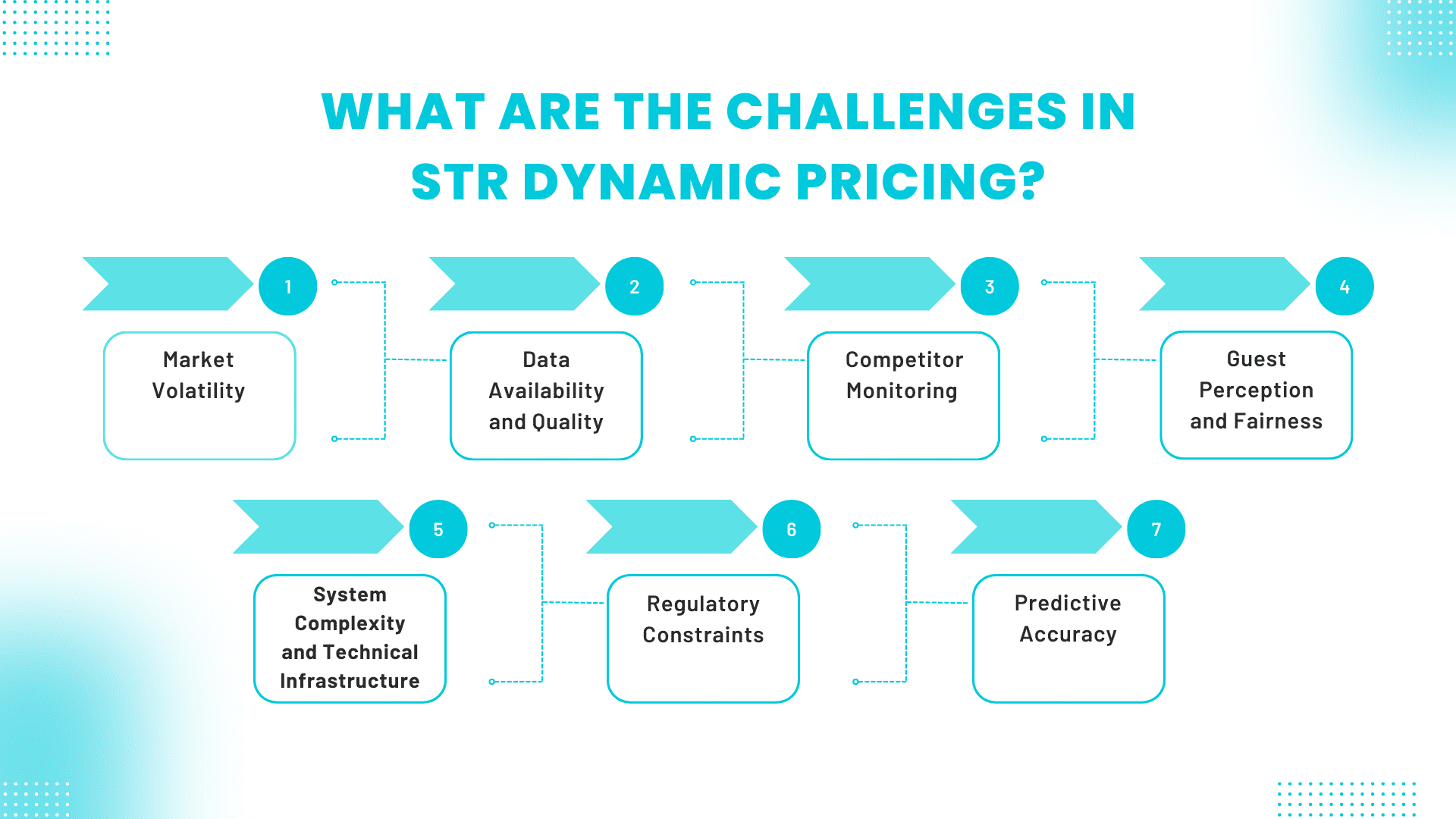Dynamic pricing has emerged as a powerful tool for property managers and short-term rental (STR) owners to optimize revenue. By leveraging data-driven strategies, dynamic pricing enables property managers and STR owners to adjust rates based on market demand and maximize profitability. However, implementing dynamic pricing for STR comes with its own set of challenges. In this article, we will delve into the top 7 challenges faced by property managers and STR owners in the realm of STR dynamic pricing.
1. Market Volatility
The demand and supply dynamics of the STR market can be highly volatile. Factors such as seasonal variations, local events, economic conditions, and even weather patterns can influence the demand for accommodations. Predicting and adapting to these fluctuations accurately is crucial for successful dynamic pricing.
2. Data Availability and Quality
Dynamic pricing relies heavily on data analysis to make informed pricing decisions. However, obtaining accurate and up-to-date data on market trends, competitor prices, and relevant external factors can be challenging. Additionally, data quality issues such as incomplete or inconsistent information can impact the effectiveness of dynamic pricing algorithms.
3. Competitor Monitoring
Keeping track of competitors’ pricing strategies and adjusting prices accordingly is a vital aspect of dynamic pricing. However, in the STR market, there can be a large number of competitors, ranging from individual hosts to property management companies. Monitoring and responding to the pricing actions of numerous competitors in real-time can be complex and resource-intensive.
4. Guest Perception and Fairness
Implementing dynamic pricing introduces the risk of guests perceiving price changes as unfair or arbitrary. Pricing fluctuations may lead to concerns about price discrimination or inconsistent pricing patterns. Balancing revenue optimization with maintaining customer satisfaction and trust is a delicate challenge that requires careful communication and transparency.
5. System Complexity and Technical Infrastructure
Developing and maintaining a robust technical infrastructure to support dynamic pricing can be demanding. It requires efficient data collection, processing, and analysis capabilities, as well as the ability to integrate with booking platforms and other relevant systems. Ensuring the accuracy, reliability, and responsiveness of the dynamic pricing system adds complexity to the implementation process.
6. Regulatory Constraints
STR operations may be subject to local regulations and restrictions, including limitations on pricing practices. Compliance with legal requirements while implementing dynamic pricing can be a challenge, especially when regulations vary across different jurisdictions.
7. Predictive Accuracy
The success of dynamic pricing depends on accurate demand forecasting and prediction models. However, accurately forecasting demand patterns, especially during periods of uncertainty or unusual events, can be challenging. Errors in predicting demand can lead to mispriced listings and missed revenue opportunities.
💎 Conclusion
Implementing dynamic pricing strategies for short-term rentals presents several challenges, ranging from market volatility to regulatory constraints. However, by adopting data-driven approaches, property managers and owners can navigate these challenges more effectively. Leveraging comprehensive data, monitoring competitors, and utilizing advanced analytics tools, hosts can make informed pricing decisions that optimize revenue while ensuring guest satisfaction. In our next blog post, we will explore solutions to overcome these challenges, providing actionable strategies to successfully implement dynamic pricing in the STR market. Stay tuned for expert insights and practical advice to take your STR dynamic pricing to the next level.









